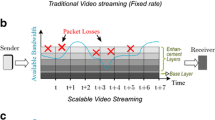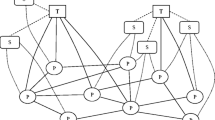Abstract.
The paper investigates efficient bandwidth allocation schemes for the transmission of MPEG-2 video traffic on high-speed networks. To this end we performed an extensive analysis of the traffic generated by an MPEG-2 encoder. Specifically, we encoded “The Sheltering Sky” movie according to the MPEG-2 standard. By the analysis of the generated traffic it results that a constant-quality transmission can be performed with a poor bandwidth utilization. In the paper we identified that the low bandwidth utilization is caused by rare high-rate periods in the codec bitstream. Hence, we identified the source scalability as a promising approach to achieve a “quasi-constant” quality transmission and an efficient bandwidth utilization. The effectiveness of this approach is evaluated in the paper via simulation. Specifically, by defining a Markovian model for an MPEG-2 scalable source we performed a set of simulation experiments which indicate that the source scalability approach significantly increases the utilization, while maintaining the quality of the video signal at the highest value for most of the time, e.g., a 50% of the network utilization with the highest quality for the 99.7% of the time.
Similar content being viewed by others
Author information
Authors and Affiliations
Rights and permissions
About this article
Cite this article
Chimienti, A., Conti, M., Gregori, E. et al. MPEG-2 sources: exploiting source scalability for an efficient bandwidth allocation. Multimedia Systems 8, 240–255 (2000). https://doi.org/10.1007/s005300000040
Issue Date:
DOI: https://doi.org/10.1007/s005300000040




